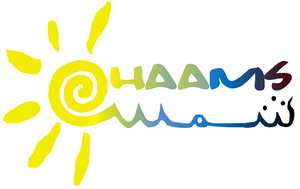WP4 « Water production and use » (R. Bouhlila and O. Grünberger)
In the Mediterranean rural landscapes, rainfed uplands forests and cultivations or snowfed altitudes, precipitation deliver excess of water by runoff and/or underground recharge that is transferred downstream and contribute to water stocks in reservoirs lakes and aquifers (“Water production”). On the other side “Water uses” comprises waters consumed by the rain fed and irrigated plants. Estimation of effects downstream of “natural” spatial variability expressed by relieves, soils characteristics, climate, precipitation fields already build up a scientific challenge even with methodological inputs and data sets from WP2. Likewise, anthropogenic factors (WP3) boost complexity of optimisation in the distribution of water quantities and at the same time, sediments movements in the landscape carry solutes that may endanger water quality. Optimization of resources use requires a better understanding of each process involved (upland runoff, groundwater recharge rate) for improving integrated models (WP6) and a way of integration from up-lands to low-lands and from now to scenarii predictions (WP5). The proposed network will put in relation studies being achieved in the four pilot sites in order to get a global picture and explore news paths of interactions. Methodological approach is based on an original combination of already implemented hydrological, hydrogeological and SVA models, of in situ measurements and of remote sensing products.
Proposed tasks
4.1 Upland “water production”: Intermittent stream-flow modelling, snow hydrology and stream contamination
Input: WP2, WP3, WP6 / Output: WP5, WP6
This task studies the “water production” processes in Mediterranean up lands by modelling run-off, stream flows taking into account snow contribution on the higher zones when required. This task will benefit from long times hydrological series of observatories and examine the influence of farmers practices on runoff. It will explore different type of contamination of surface waters by agricultural intrants, particularly herbicide treatments on rain-fed cereals through dedicated measurements campaign.
4.2 Water use: SVA transfer processes on rain-fed and irrigated crops
Input: WP2, WP3 / Output: Task 4.4, Task 4.3, WP6
This task aims to better understand and to model processes at the SVA interface either in rain-fed and irrigated fields, in particular, for the complex crops (multi-strata tree crops). We will study the coupling intensity of the turbulent transfers between soil and cover source that is not well known on heterogeneous canopies by adapting physically-based SVA transfer models to the main crops. A special attention will also be devoted to the modelling of the agricultural practices by “translating” WP3 inputs into quantitative information (irrigation surplus).
4.3 Underground “water production”: recharge and contaminant processes
Input: Task 4.2-WP2 / Output: WP5
This task studies and models the process of “water production” by aquifer recharge in rain-fed up-lands, irrigated areas and water bodies. It specifically focuses on the quantitative and qualitative (salinization and seawater intrusion, effects of agricultural intrants such as Nitrates) effects of irrigation returns based on existing isotopy data and dedicated hydro-chemical campaigns. The crop water budget will also be analysed to derive drainage fluxes on the instrumented sites at the station scale using the SVA models (task 4.2).
4.4 Water use: Irrigation water management and crop water use patterns
Input: Task 4.2, WP2, WP3 / Output: WP5, WP6
This task aims to characterize the crop water use pattern of the main agricultural systems co-existing in the Mediterranean region. The challenge is to map those patterns by transforming land use classes into water consumption taking into account the type of crops, the cropping calendar and the agricultural practices. We will produce time series of water use patterns using the SAMIR (SAtellite Monitoring of IRrigation) tool based on the FAO-56 approach that has been properly calibrated on the main crops of the region. The methodology will be applied for the past land uses (from the beginning of the 2000s using 250m. MODIS data), in order to identify the existing dynamics in water use patterns and to trace possible trajectories. We will analyse the added-value of EO products (SM, thermal-based ETR and its partition) to constraint the water budget of these models through data assimilation.
Deliverables
- D4.1 Report on available water resources and changes in reservoirs M21
- D4.2 Knowledge for trajectories and impacts M24
- D4.3 Report on first recommendations about herbicide contamination M24
- D4.4 Report on knowledge for build on line decision support tools for irrigation M27
